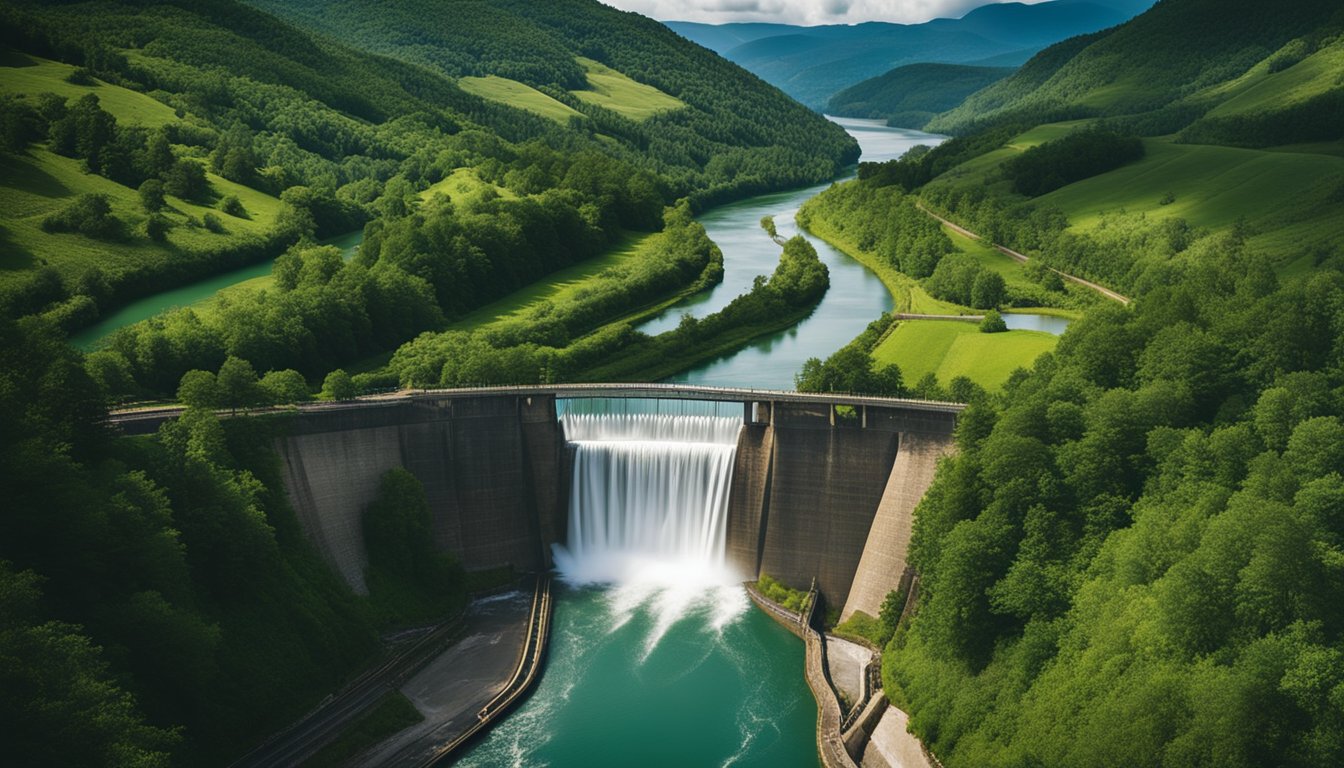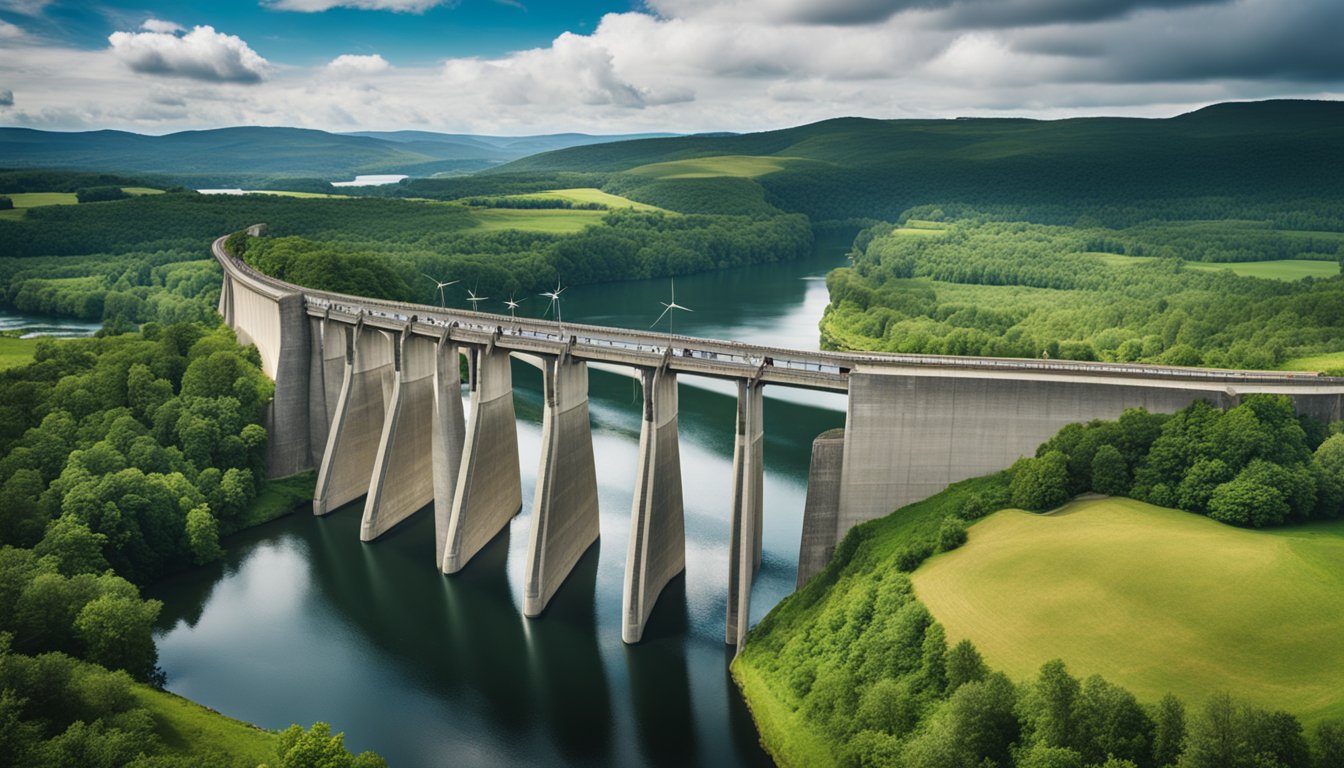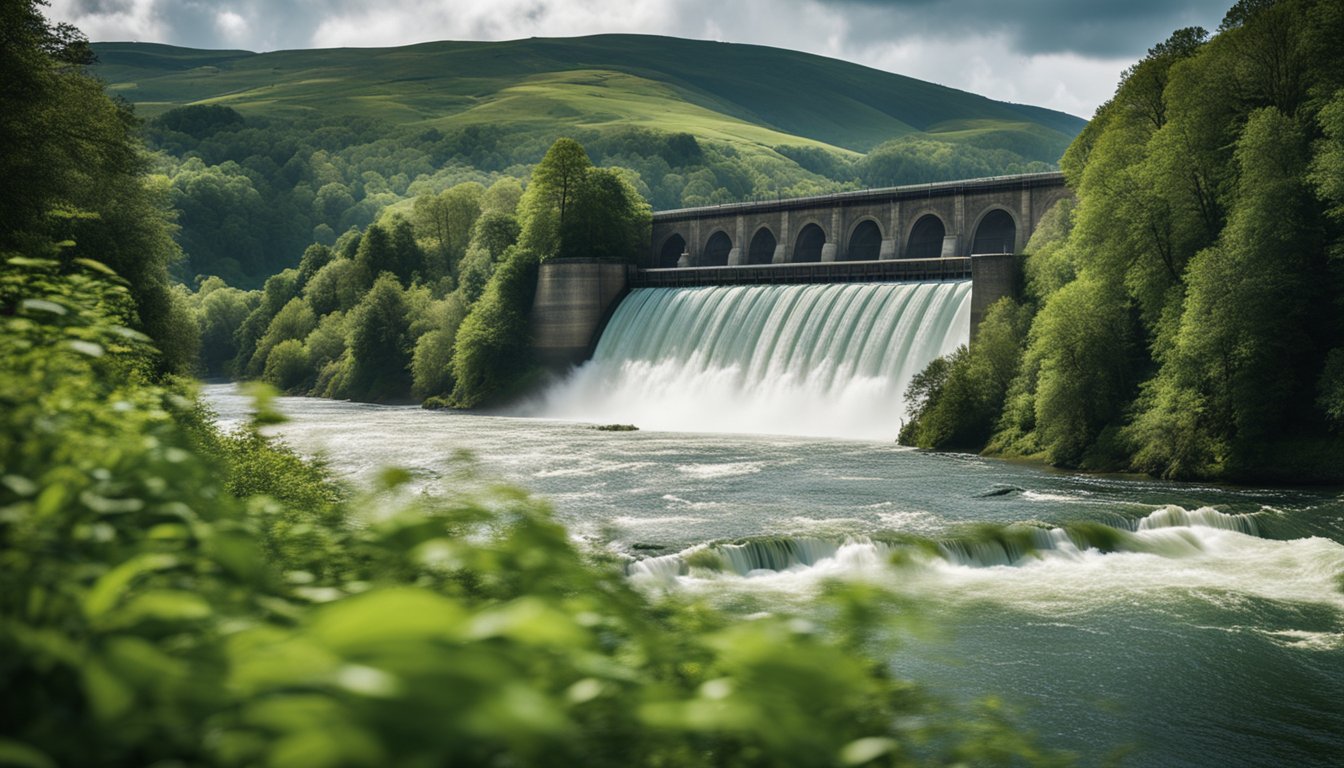Late updated: 12 Feb 2025 13:02
Written by: Eleanor Hartman
Hydroelectric Power Opportunities In British Weather: Harnessing Rainfall for Energy
Hydroelectric power provides a fascinating intersection between British weather and renewable energy opportunities. In a country known for its rainfall, many might overlook the potential that this water abundance offers for energy generation. The United Kingdom's wet climate provides an advantage for hydroelectric systems, with fast-flowing water resources available for power generation year-round.

Our exploration of hydroelectric power possibilities aims to shed light on the potential this energy source holds for our future. With over 1,500 hydropower plants operating across the UK, the sector is poised for growth, despite its relatively small contribution to the national energy mix at present. As climate change pressures increase, hydropower stands as a resilient option that complements other renewables like wind and solar.
Understanding how we can maximise hydroelectric potential will play a key part in shaping an energy-efficient and environmentally friendly future. The economic advantages can be substantial, from reducing reliance on fossil fuels to ensuring stable energy supplies. Join us as we delve into this exciting and critical opportunity for the UK's energy landscape.
Key Takeaways
- British weather provides ample opportunity for hydroelectric power.
- Hydropower complements other renewable sources in the UK.
- Economic benefits arise from reduced fossil fuel dependency.
Harnessing Hydroelectric Power in the UK
In the UK, harnessing hydroelectric power is driven by technological advances and strategic planning. The country's electricity demand provides a significant opportunity for further development, and reliable technology ensures consistent energy supply. Let's explore the current state of hydropower, the challenges and opportunities it faces, and innovations emerging in this sector.
Current Landscape of UK Hydropower
The UK currently relies on hydropower as a modest yet dependable source of electricity generation. With an installed capacity exceeding 2 gigawatts, it plays a critical role, particularly in regions like the Highlands and north Wales. Here, hydroelectric plants benefit from abundant rainfall and suitable topography.
Large-scale hydroelectric projects are complemented by smaller initiatives, such as micro-hydro systems. These smaller systems help rural communities by generating local electricity, enhancing energy security. Pumped storage facilities like Dinorwig in Wales exemplify innovative solutions, providing energy storage to balance demand and supply.
Challenges and Opportunities
Hydropower in the UK presents distinct challenges and potential. One primary concern is obtaining planning permission, navigating environmental regulations, and ensuring projects do not compromise ecosystems. Moreover, expanding hydroelectric projects involves considerable investment and risk management.
Yet, opportunities abound. The potential for hydropower expansion exists, especially through new marine energy and tidal energy projects. These methods promise sustainable growth in electricity generation without large-scale environmental disruptions. The reliable nature of current hydropower technologies ensures that once operational, they provide a stable energy source.
Innovation in British Hydroelectric Technology
Innovation drives the future of hydropower in the UK. New technologies in marine and tidal energy present promising avenues for energy generation. British engineers are exploring ways to make hydropower plants more efficient and environmentally friendly. Micro-hydro systems continue evolving to bring power to remote areas, demonstrating impressive adaptability.
We're also seeing advancements in pumped storage technology, crucial for energy security. By storing electricity during low demand and releasing it when needed, these systems enhance the reliability of the national grid. With ongoing research and development, the UK is set to optimise its hydropower capabilities for future sustainability.
Economic and Environmental Implications

The role of hydropower in the UK's energy landscape involves fostering economic growth and addressing environmental challenges. By contributing to energy security and emissions reduction, hydropower serves as a keystone in our strategy to decarbonise and manage natural resources.
Boosting the UK Economy through Hydropower
Hydropower projects bolster the UK economy by creating jobs and driving growth. According to the British Hydropower Association, the sector supports both direct and indirect employment opportunities, particularly in rural areas. These projects contribute to the economy through gross value added (GVA), enhancing local infrastructure and services.
Moreover, hydropower promotes energy security, reducing reliance on imported energy sources. By diversifying the energy mix, we ensure resilience against market fluctuations. Attending events like the BHA Annual Conference helps stakeholders exchange insights on best practices and future developments, reinforcing the sector's role in our economic framework.
Balancing Energy Production and Nature Conservation
Developing hydropower resources requires careful consideration of environmental impacts. As we address climate change, balancing energy production with nature conservation becomes critical. Efficient design and placement of facilities minimise disruptions to local ecosystems and wildlife habitats.
Incorporating a mix of renewable sources, including tidal range and other technologies, helps us decarbonise while maintaining biodiversity. Collaboration with environmental organisations ensures compliance with regulations and promotes sustainable practices. Our focus is to maintain harmony between hydropower development and nature, ensuring long-term viability for both.
Frequently Asked Questions

As we explore hydroelectric opportunities in British weather, key questions arise related to the current state and future potential of hydropower in the UK. Addressing these will illuminate the viability and strategic importance of hydropower in a nation known for its variable climate.
How many hydroelectric power stations currently operate in the UK?
Currently, the United Kingdom boasts over 100 hydroelectric power stations. These range from small-scale community projects to larger commercial facilities. While hydroelectricity contributes a modest percentage to the national grid, it remains a reliable energy source.
What is the estimated potential for expanding hydropower in the United Kingdom?
The potential for expanding hydropower in the UK is significant, particularly in Scotland and Wales. With existing resources and technological advancements, increasing capacity is feasible. Strategic site development could further boost output.
Why hasn't the UK more extensively adopted hydroelectric power?
Hydroelectric power adoption in the UK is limited due to geographical and environmental constraints. Suitable sites often face challenges related to terrain, ecosystem impact, and regulatory issues. These factors have slowed widespread development.
How do typical British weather conditions impact the efficiency of hydropower plants?
British weather, characterised by frequent rainfall, generally benefits hydropower efficiency. Consistent water flow is crucial for maximising output. However, extreme weather events, such as prolonged droughts or floods, can disrupt operations.
Can the United Kingdom increase its reliance on hydropower given its climate?
The UK can indeed increase its reliance on hydropower. Abundant rainfall supports steady operation, and strategic planning can mitigate the risks posed by weather extremes. Investment in technology and infrastructure is key.
Which advancements in technology could boost hydropower production in the UK?
Advancements in turbine efficiency and storage solutions could significantly enhance UK hydropower production. New materials and design innovations offer increased output with minimal environmental impact. Such technologies are integral to future expansion.